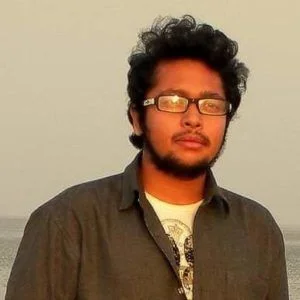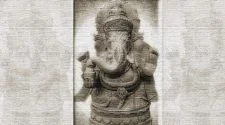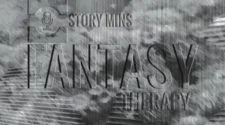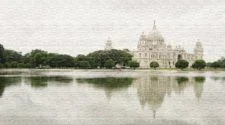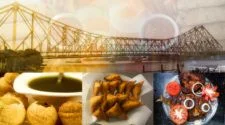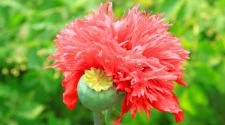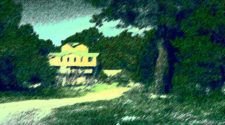The story of Devi Durga, the way it has been presented in various scriptures including the descriptions in ‘Markandeya Purana’, the very least to say, is more than the word ‘interesting’. Time and again, religious, religion based and analytical researches have tried to explore the roots of its feminist philosophy. Here, we are merely trying to re-enter the core dimension of the glory of the ‘Goddess’, to recollect the story of victory of the Goddess ‘Durga’ (The Symbol of Hope), over her arch nemesis, the cruel ruler called Mahishasura.
Who was Mahishasura?
Keeping it simple, Mahishasura’s father Rambha was the king of the Asuras (Demon Gods). Asuras are considered to be the perpetual enemies of the Devas (Gods). ‘Mahisasura’ is a Sanskrit word composed of ‘Mahisha’ meaning buffalo and ‘Asura’ meaning Demon-God. Now here is an important bit to remember, a demon or Asura in Hindu mythology doesn’t always represent evil or malice, but rather are a variant of demigods, who may or may not be evil.
It’s said that Rambha had once fell in love with a water buffalo, which was in disguise, a cursed princess, called Shyamala. Eventually Mahishasura was born and as a result of this unorthodox union, he could at will, take the form of either a human or a buffalo. As legends head ahead, Mahishasura, the buffalo demon king was soon recognized as a superpower due to his deception skills and his immense prowess. He was a staunch worshipper of Lord Brahma, considered to be the ‘Creator God’ in Hinduism. After 10,000 years of penance, Brahma was finally pleased and offered Mahishasura a wish. Hungry for more power, supremacy and dominance, Mahishasura demanded immortality. When Brahma refused to grant such impossibility, Mahishasura intelligently altered his wish, asking for a boon that ‘no man or animal’ should be able to kill him on the face of Brahma’s creation. Brahma granted him this wish and left stating that a woman would be the end of him. Confident over the impossibility of a woman be able to kill him, Mahishasura roared “A weak and feeble woman, won’t be capable of doing that.”
Who is Durga?
The famous rendering of Jai Durge Durgati Pariharini, describes her as one who rescues her followers from all the chaos (Durgati) in life. If we go by etymology, the word ‘Durga’ to an inquisitive mind will sound like it came from the word ‘Durg’ which means ‘Fort’ or in a sense impassable and impenetrable.
While interpretations of Durga came to surface in Rigveda and Atharvaveda, in Section 10 of Taittiria a deity called Durgi appeared and despite the lack of fully supportive historical evidences, references lie therein, in what we all came to know as ‘Hindu Literature’.
Another interpretation represents her as she who is hard to access (Durgen Gamyate). Given the fact that two of her legendary abodes are located in two of the most inaccessible regions north of the Vindhyas, where she resides as Vindhyavasini Devi in the Vindhya Kshetra, the forested area around the Vindhya mountains south of the Himalayas; and as Nanda Devi in the Himalayas, where she sits atop a peak that bears her name and is worshipped in various forms in the region.
She is the most important diety of Shaktism tradition in India wherein it is believed that the metaphysical reality is feminine and its supreme ruler is Parvati aka Durga.
This concept is described in the text of Devi Mahatmayam which is estimated to have been composed between 400 and 600 CE and considered at par with Bhagwat Gita by Shakta Hindus. Among many epithets for Durga in Shaktism, important nine appellations are (Navadurga): Shailaputri, Brahmacharini, Chandraghanta, Kushmanda, Skandamata, Katyayini, Kaalratri, Mahagauri and Siddhidatri.
A total of 108 names of the goddess are recited to worship her and is popularly known as the “Ashtottarshat Namavali of Goddess Durga”.
The Mythological Scenario:
A huge part of the legend hides behind our nonchalance as we seldom ask the question about why Asuras and Devas even started fighting? As it’s claimed, here’s why…
Traditionally, the Devas represent ‘Order’ and the Asuras represent ‘Chaos’, although the Devas are said to represent mind and spirit and Asuras represent elemental forces. But in Vedic literature, Asuras may also represent societal forces while Devas represent natural forces. So, the conflict between them is supposed to represent cooperative rivalry and dynamic equilibrium. In short, it’s the way of keeping the balance between the various known sources of power.
A story goes that Indra, the King of Swarga and the Devas (King of Gods), came across Sage Durvasa while riding on his elephant called Airavata. The sage offered him a special garland given to him by Shiva.
Now why is that? I don’t know (pun-intended)!
Indra accepted the gift, and casually placed it on the trunk of the elephant. The elephant threw the garland on the ground. This enraged the sage, who realized that Indra had no control over his own ego and cursed Indra along with all the Devas, that a day shall arrive, when they would be ‘bereft of’ all their strength, energy, and fortune.
As soon as the news of how Indra’s stupefying ego endangered the positions of all the gods spread out, the Asuras, led by Bali, defeated the Devas and gained control over the Universe. The Devas sought the help of Vishnu, who hatched a plan to fight the Asuras in a diplomatic manner, followed by an elaborate ploy of inviting the Asuras to jointly churn the ocean for the Nectar of immortality. Devas already were stripped off, of their divine power and churning an ocean was no easy job for a weakened group. Why at all they had to involve the Asuras. The remuneration that both the groups had agreed upon was that that the Asuras would get an equal share of the Nectar which was impossible for Asuras to get access without the help of the Devas.
However, Vishnu had told the Devas that he would arrange for them to obtain and possess the nectar without having to share it with the Asuras. After the Devas and the Asuras churned the sea of milk in a so called locked dimension, the heavenly physician called Dhanvantari (A similar form of Vishnu) arose from the depth of the ocean with the “Nectar of Immortality” in his hands. Following the incident, the Devas and the Asuras tried to gain possession of the Nectar and fought fiercely, until eventually the Asuras came to become the winners.
While the Asuras were celebrating their victory, the Devas requested Vishnu to help them regain possession over the “Divine Nectar of Immortality”. As promised by him earlier, Vishnu took the form of an enchanting woman called Mohini, who distracted the Asuras by captivating them in her beauty and with her dancing skills. This gave the Devas a chance to snatch the Nectar away from Asuras and distribute among the Devas as fast as possible. Not were all the Asuras, who fell for the trick though, as the Asura called Rahu saw through Vishnu’s avatar and in order to possess some of the Nectar, he too disguised himself as one of the Gods, eventually drinking some of it. But the gods called Surya (Sun) and Chandra (Moon) saw through Rahu’s disguise, informing Mohini accordingly. Mohini then took the form of Vishnu and decapitated Rahu, before Rahu could swallow the Nectar, resulting in his head somehow becoming immortal, though not the body. By the time the pitcher was empty, the Devas had more nectar than Asuras. Vishnu had successfully fooled the Asuras of their share of nectar. With renewed strength, the Devas defeated the Asuras in subsequent fights.
Core Mythology:
In coming years after the incident, Mahishasura with powers he had newly earned from Brahma, declared a war on Hindu pantheon of Gods and Godesses or as the legends state, it was an attack on the Trilok (Three Worlds called Earth, Heaven and Hell) with his army.
The gods decided to wage a war upon Mahishasura but due to Lord Brahma’s boon, nobody was able to defeat him. The gods thus once again approached Lord Vishnu for help. After considering the situation, Lord Vishnu decided to create a feminine form made up of raw and divine cosmic energy, to defeat Mahishasura. However, since Lord Shiva is the god of destruction, they had to consult with him, in order to gain access to such extremities. Brahma, Vishnu and Shiva combined all their powers together, and the divine power gave birth to ‘Durga’, an incarnation of Goddess Parvati, the daughter of Himavan (Himalaya), the lord of the mountains and the mother-goddess Shakti, made up of the inherent power that runs the universe.
Goddess Durga then fought Mahishasura over a period of fifteen days (Varies Depending on the Book you Consult) during which Mahishasura kept shifting his shape to appear and attack Durga in different forms of animals, misleading her to the core. Finally when he transformed into the buffalo (His Last Resort), Goddess Durga stabbed him with her trident ending his reign forever. An interpretation states that Mahishasura was defeated, leading to the freedom of the life energy of folk, thereby termed as ‘Mahalaya’. This is more or less, the generic and widely accepted version of the story.
Perspective of a Mostly Unknown Myth:
Another tale that dates back to 3000 years right after arrival of much awaited Bronze age in Indian Subcontinent says that Mahishasura was a Non-Aryan king, whose people used to worship the Buffalo. Mahishasura’s powers knew no bounds as he defeated many Aryan kings in the northern kingdom of Aryavarta. Description of the kingdom can be found in some classical Hindu texts in Sanskrit such as the ones by Patanjali and the authors of Dharmashastras.
During the time the Aryan kings were defeated by Mahishasura, a queen came to rule the northern part of Aryavarta. The already defeated kings pledged their allegiance to the Queen, and her army grew in strength and numbers, while Mahishasura was running out of supplies and man power.
Thinking that he couldn’t be defeated by a woman, he sent out messengers to the queen, appealing to her, to become his consort. The queen kept refusing but Mahishasura was refractory enough to have kept sending messengers, while the queen was planning an attack on the buffalo king.
As the judgement day approached and one battle after another, Mahishasura’s army worn out to fight the queen’s army, Mahishasura himself thought that he could defeat the queen and attacked her. However, she killed him with her spear, tore his chest and fed him to his pet lion.
In the end, if there is anything to take away from the Hindu myth, it would be that in a way Asuras are the conduit of our ego in dissension with divine-consciousness. Divine consciousness doesn’t need a religion. All it needs is good observation.
Depending on which version of the story seems more acceptable to you, going by your standards of acceptability, you may choose one. My job was to briefly narrate it, to the extent of my study with regards to the subject. Wishing “Shuva Vijaya” to you and your family and thank you for your time!
To Access A Related Video : Please Click Here
Featured image courtesy: pxhere.com
